- Step 1: Assessing the Condition
- 1.1 Examine the Overall Health
- 1.2 Check for Deadwood and Damaged Branches
- 1.3 Assess the Size and Shape
- 1.4 Note the Fruit Production
- 1.5 Consider Environmental Factors
- Step 2: Gathering the Pruning Tools
- Step 3: Removing Dead and Diseased Branches
- Step 4: Cutting Back Overgrown Branches
- Step 5: Thinning Out the Canopy
- Why should you thin out the canopy?
- How to thin out the canopy:
- Conclusion
- Step 6: Pruning to Encourage New Growth
- Step 7: Shaping the Gooseberry Bush
- Step 8: Cleaning Up and Mulching
- Question-answer:
- Why is it important to prune old, neglected gooseberries?
- When is the best time to prune old, neglected gooseberries?
- What tools do I need to prune old, neglected gooseberries?
- Can I prune old, neglected gooseberries if they are already flowering?
- How frequently should I prune old, neglected gooseberries?
- Video: How To Prune Gooseberries for High Yields
If you have an old gooseberry bush that has been neglected for some time, fear not! With the proper pruning techniques, you can revive your gooseberry bush and enjoy a bountiful harvest once again. Pruning is an essential task for maintaining the health, shape, and productivity of your gooseberry bush. In this step-by-step guide, we will walk you through the process of pruning your old, neglected gooseberries to ensure that they thrive and produce delicious fruit.
Step 1: Assessing the Bush
Before you begin pruning, take a good look at your gooseberry bush. Look for dead or diseased branches, crossed branches, and excessive growth. These are signs that the bush needs to be pruned.
Step 2: Remove Dead and Diseased Branches
Start by removing any dead or diseased branches. Use sharp, clean pruning shears to make clean cuts just above a healthy bud or branch junction. Removing these branches will help improve air circulation and reduce the risk of disease. Dispose of the removed branches to prevent the spread of disease.
Step 3: Thin Out Excessive Growth
Next, thin out any excessive growth to allow for better light penetration and air circulation within the bush. Remove any branches that are crossing or rubbing against each other. This will help prevent disease and ensure that each branch receives the necessary nutrients and sunlight.
Step 4: Shape the Bush
Finally, shape the bush by selectively removing branches to create an open, vase-like structure. This will allow for even fruiting and easier maintenance. Focus on removing inward-growing branches and branches that are crowding the center of the bush. Aim for an overall balanced shape, with the top of the bush slightly narrower than the base.
By following these pruning tips, you can rejuvenate your old, neglected gooseberry bush and encourage it to produce a healthy crop of delicious berries. Remember to prune during the dormant season, usually in late winter or early spring. Regular pruning will help keep your gooseberry bush in optimal condition for years to come.
Step 1: Assessing the Condition
Before starting the pruning process, it is important to assess the condition of the old, neglected gooseberry bushes. This step will help you determine the extent of pruning required and identify any potential problems that may need to be addressed.
1.1 Examine the Overall Health
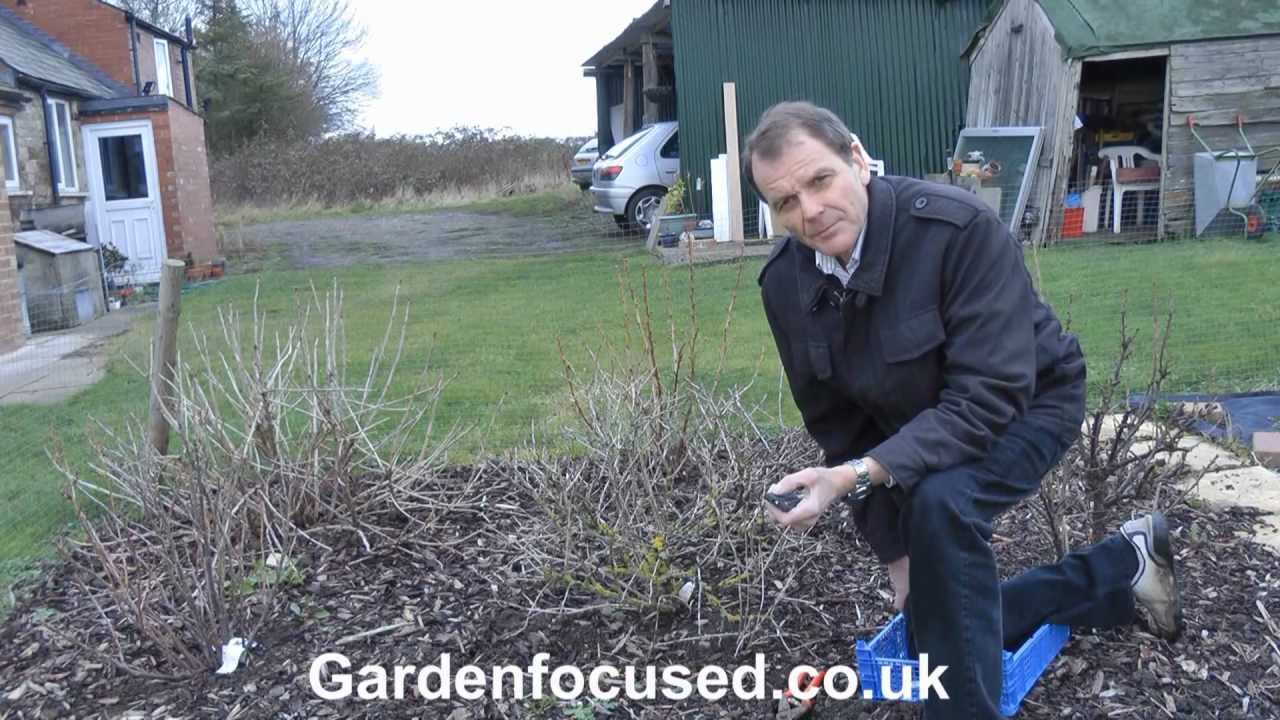
Take a careful look at the overall health of the gooseberry bushes. Look for signs of disease, pest infestation, or any other issues that might affect the plant’s vigor and productivity. Common signs of poor health include yellowing leaves, wilting, or stunted growth.
1.2 Check for Deadwood and Damaged Branches
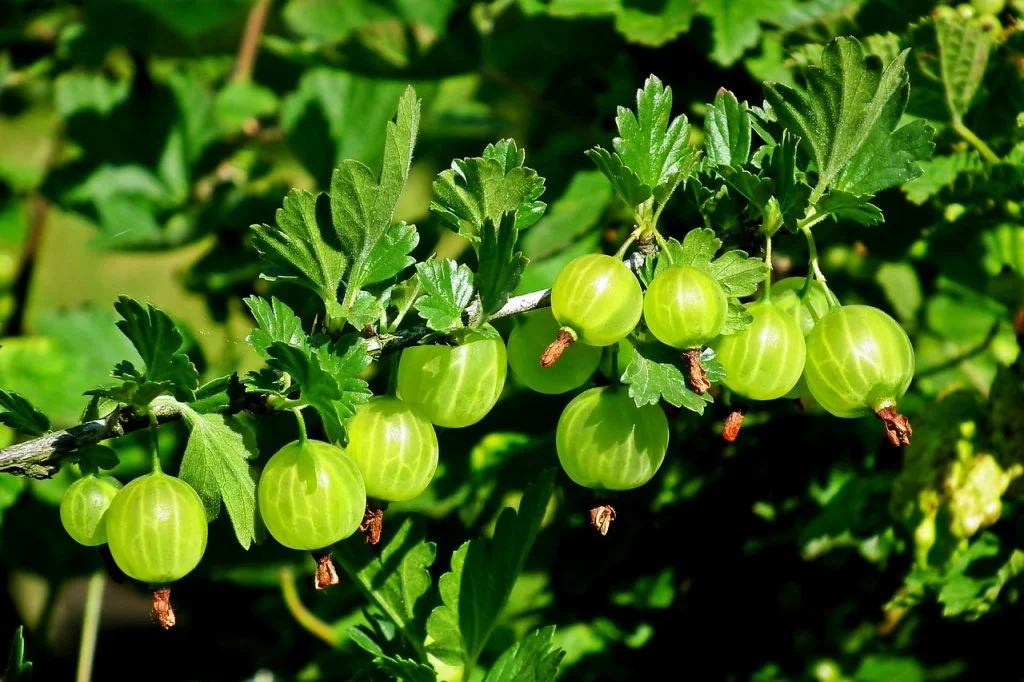
Inspect the branches of the gooseberry bushes for deadwood and damaged branches. Deadwood refers to any branches that are dry, brittle, and lifeless. These branches should be pruned as they can attract pests and pathogens, and hinder new growth.
1.3 Assess the Size and Shape
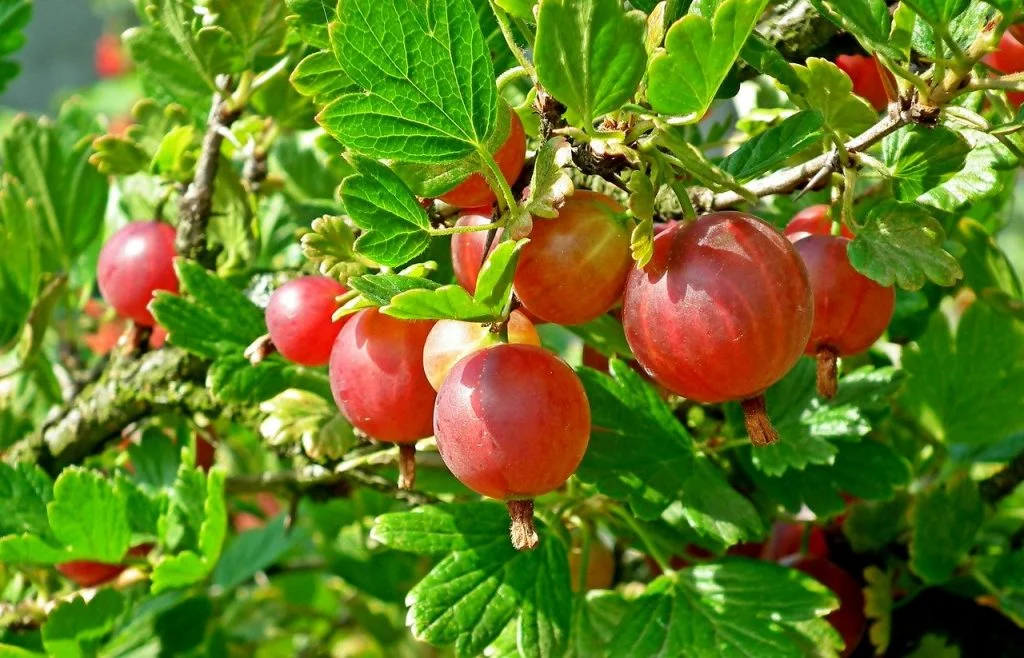
Observe the overall size and shape of the gooseberry bushes. Neglected gooseberry bushes may become overgrown and lose their natural shape. Take note of any excessive vegetative growth or overcrowding that may be present.
1.4 Note the Fruit Production
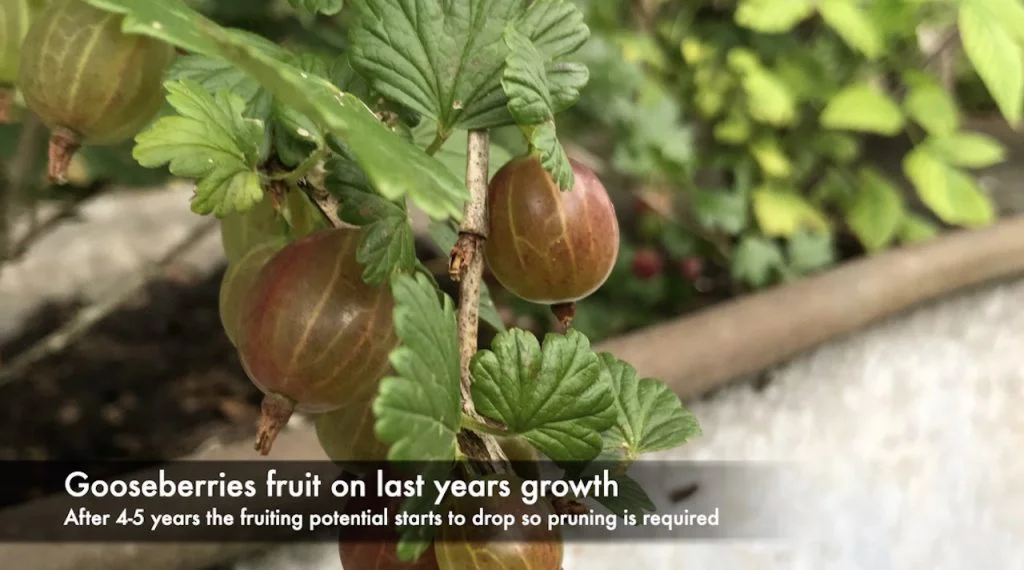
Assess the fruit production of the gooseberry bushes. Neglected plants may produce less fruit or have smaller, low-quality berries. Evaluate whether the decrease in productivity is due to neglect or other factors such as disease.
1.5 Consider Environmental Factors
Take into account any environmental factors that may have contributed to the neglect of the gooseberry bushes. These factors could include poor soil quality, lack of sunlight, or improper watering. Understanding the underlying causes can help prevent future neglect.
Step 2: Gathering the Pruning Tools
Before you start pruning your old and neglected gooseberries, it is important to gather all the necessary tools. Having the right tools will make the process easier and more efficient. Here are the essential pruning tools you will need:
- Pruning shears: Look for a good quality pair of pruning shears that are sharp and easy to handle. They should be able to cut through the thicker branches of the gooseberry bush.
- Loppers: Loppers are used for cutting larger branches or stems that are too thick for pruning shears. Choose loppers with long handles to provide leverage and make cutting easier.
- Pruning saw: A pruning saw is necessary for cutting through larger branches that cannot be easily cut with pruning shears or loppers. Look for a saw with a comfortable grip and sharp teeth.
- Gloves: Pruning can be a prickly job, so make sure to wear a pair of thick gardening gloves to protect your hands from thorns and rough branches.
- Safety goggles: To protect your eyes from flying debris, wear a pair of safety goggles while pruning.
- Garden twine or plant ties: You may need garden twine or plant ties to secure any newly pruned branches or to train the gooseberry bush into a desired shape.
- Disinfectant spray: It is important to clean your pruning tools after each use to prevent the spread of diseases. Use a disinfectant spray or solution to sterilize your tools.
Once you have gathered all the necessary pruning tools, you will be ready to move on to the next step of the pruning process.
Step 3: Removing Dead and Diseased Branches
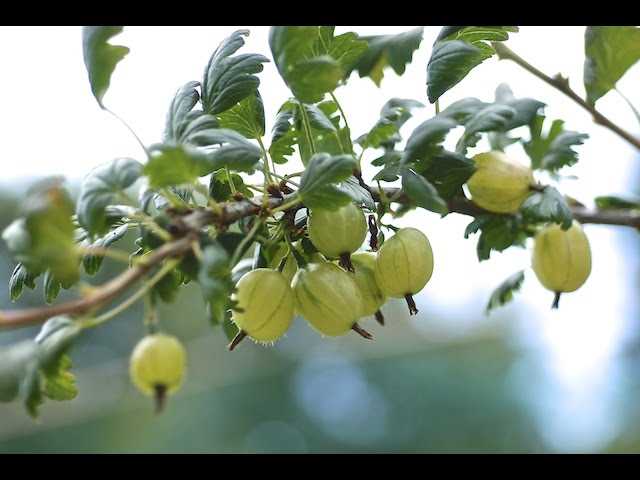
One important step in pruning neglected gooseberries is to remove any dead or diseased branches. This will help improve the overall health and productivity of the plant.
Begin by carefully inspecting the gooseberry bush for any branches that are clearly dead or diseased. These branches may appear brown, brittle, or discolored. Using clean and sharp pruning shears, make a clean cut at the base of the affected branches, removing them completely.
It is crucial to sanitize your pruners between cuts to prevent the spread of diseases. You can do this by wiping the blades with a cloth soaked in rubbing alcohol or a mild bleach solution.
If you notice any branches that are partially dead or show signs of disease, prune them back to healthy wood. Make sure to cut back to a green bud or lateral branch, as this will promote new growth.
Removing dead and diseased branches not only helps maintain the overall health of the gooseberry bush but also improves its appearance. Eliminating these branches allows for better air circulation and reduces the risk of pests and diseases spreading.
Step 4: Cutting Back Overgrown Branches
Once you’ve completed the initial pruning steps of removing dead, damaged, and crossing branches, it’s time to tackle the overgrown branches that are crowding the center of the gooseberry bush.
1. Identify the overgrown branches: Take a step back and examine the gooseberry bush. Look for branches that are growing excessively tall, crossing other branches, or preventing sunlight and air circulation in the center of the bush.
2. Plan your cuts: Before cutting any branches, strategize which ones to remove to ensure balanced growth and an open center. Aim to remove no more than one-third of the plant’s total growth in a single pruning session.
3. Make your cuts: Use sharp, clean pruning shears or loppers to make clean cuts. Start by cutting off the overgrown branches at their base, near the main trunk of the gooseberry bush. Make the cut just above a bud or lateral branch to encourage new growth.
4. Remove the cut branches: As you cut each overgrown branch, immediately remove it from the area to prevent tripping hazards and to keep the workspace clean.
5. Assess the overall shape: Step back and evaluate the bush after removing the overgrown branches. Ensure that the shape is balanced, with an open center that allows sunlight and air to reach the inner branches.
6. Repeat as needed: If there are still overgrown branches remaining after this step, continue identifying and removing them following the same process until the desired shape and openness are achieved.
Note: It’s important to remember that gooseberries are generally hardy and can tolerate heavy pruning. However, removing too many branches at once or cutting too far back can stress the plant. It’s best to spread pruning out over several seasons, especially if the gooseberry bush has been neglected for a long time.
Step 5: Thinning Out the Canopy
Once you have pruned and shaped the main branches of your neglected gooseberry bush, it’s time to thin out the canopy. Thinning out the canopy simply means removing some of the interior branches and foliage to allow for better air circulation and light penetration.
Why should you thin out the canopy?
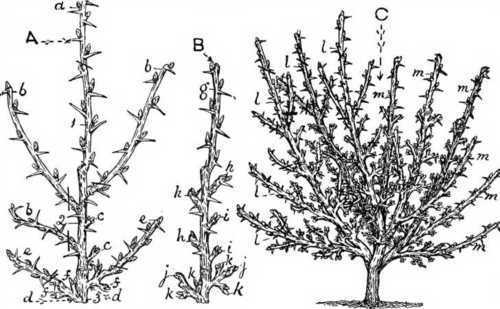
Thinning out the canopy has several benefits:
- Improved air circulation: By removing some of the interior branches, you create spaces for air to flow through the bush. This helps reduce the risk of fungal diseases that thrive in moist and stagnant conditions.
- Better light penetration: Thinning out the canopy allows more sunlight to reach the interior parts of the bush. This promotes better ripening of the fruits and improves their quality.
- Reduced risk of pests and diseases: Removing overcrowded foliage reduces the chances of pests finding hiding spots and makes it easier to spot and remove any diseased or infested branches.
How to thin out the canopy:
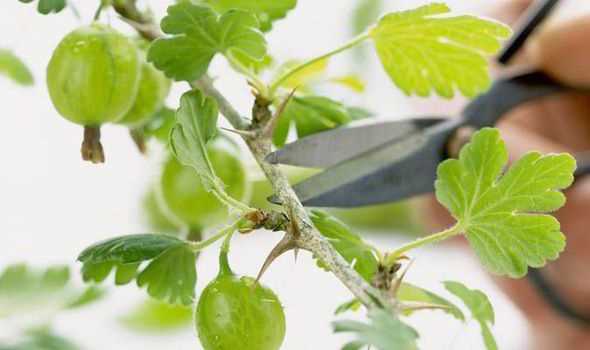
Thinning out the canopy is a simple process that involves selectively removing some of the interior branches and foliage. Here’s how to do it:
- Identify overcrowded areas: Look for areas where the branches and foliage are densely packed together. These are the areas that need thinning out.
- Select branches to remove: Choose branches that are weak, crossing other branches, or growing in unfavorable directions. Also, remove any dead or diseased branches.
- Make clean cuts: Use sharp and clean pruning shears to make clean cuts. Cut the branches close to the main stem or parent branch, making sure not to leave any stubs.
- Step back and assess: After thinning out a few branches, step back and assess the overall shape and structure of the bush. Make any additional cuts if necessary to maintain a balanced and open canopy.
Remember, the goal of thinning out the canopy is to create an open and well-ventilated structure for your gooseberry bush. Take your time and make deliberate cuts to achieve the desired result.
Conclusion
Thinning out the canopy is an important step in rejuvenating an old and neglected gooseberry bush. By removing some of the interior branches and foliage, you can improve air circulation, enhance light penetration, and reduce the risk of pests and diseases. Follow the steps above to thin out the canopy and enjoy healthier and more productive gooseberry plants.
Step 6: Pruning to Encourage New Growth
After removing the old, neglected branches, it’s important to prune the gooseberry bush to encourage new growth. Pruning stimulates the plant’s natural rejuvenation process and helps to maintain a healthy and productive plant. Follow these steps to properly prune your gooseberry bush:
- Identify the main branches: Take a look at the bush and identify the strong, healthy branches that form the main structure of the plant.
- Remove any crossing or rubbing branches: Look for branches that are crossing over each other or rubbing against each other. These branches can cause damage and should be pruned away.
- Trim back branches: Use sharp pruning shears to trim back the remaining branches. Cut them back by about one-third of their length. This will encourage new growth and help the bush to maintain a compact and manageable shape.
- Thin out the center of the bush: Remove any small, weak, or inward-growing branches from the center of the bush. This will improve air circulation and light penetration, reducing the risk of disease and boosting fruit production.
- Remove suckers: Look for any sucker shoots that are growing from the base of the bush or from the root system. These shoots are not productive and should be removed.
Remember to always clean your pruning shears with disinfectant before and after each use to prevent the spread of disease. Additionally, make sure to dispose of the pruned branches properly to avoid any potential contamination. With proper pruning, your gooseberry bush will have the best chance of producing an abundant harvest of delicious fruits.
Step 7: Shaping the Gooseberry Bush
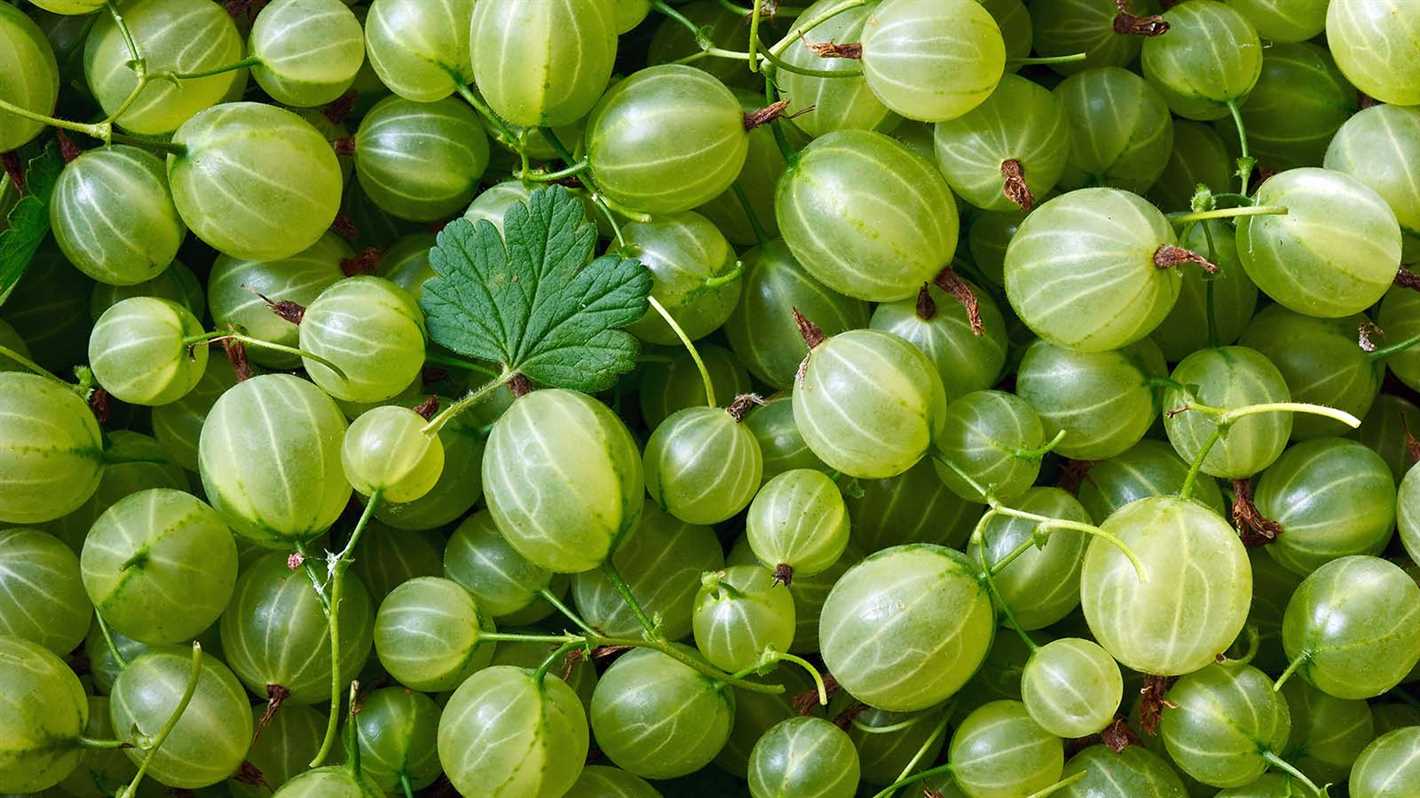
After completing the previous steps of pruning your old, neglected gooseberry bush, it’s time to shape the bush for optimal growth and fruit production.
Here are a few tips for shaping your gooseberry bush:
- Remove any remaining dead or damaged branches: Inspect the bush carefully and remove any branches that are dead or damaged. These branches will not contribute to the health and productivity of the bush.
- Thin out crowded branches: If you notice that some branches are overcrowded or crossing over each other, it’s important to thin them out. This will improve air circulation and sunlight penetration, which is essential for disease prevention and fruit ripening.
- Encourage an open and balanced shape: Gooseberry bushes should ideally have an open and balanced shape to allow for proper light exposure and air circulation. Remove any branches that are growing inward or downward, as well as any branches that hinder the overall shape of the bush.
- Prune for desired size: Depending on the space you have available and your desired size for the bush, you may need to prune more or less vigorously. Keep in mind that a larger bush will produce more fruit, but it may be harder to manage and harvest.
Remember to step back frequently and evaluate the shape of your gooseberry bush as you prune. This will help you make informed decisions about which branches to remove and how to achieve the desired shape.
NOTE: Pruning can be done either in late winter or early spring, before new growth begins. However, if you are pruning to reduce the size of an overgrown gooseberry bush, you can also prune it in late summer or early autumn.
Step 8: Cleaning Up and Mulching
Once you have pruned your neglected gooseberry bush, it’s time to clean up the area and apply mulch. Cleaning up the area is important to remove any debris or dead plant matter that may have accumulated around the bush. This will help prevent the spread of diseases and pests.
Follow these steps to clean up your gooseberry bush:
- Start by removing all the pruned branches and twigs from the ground. You can use a rake or your hands to gather them.
- Dispose of the pruned branches properly to avoid any potential risks of disease transmission.
- Inspect the area around the bush for any fallen fruits or leaves and remove them.
- Use a garden hose or a watering can to wash away any dirt or debris that may be stuck on the stems or branches. This will help keep the bush clean and prevent any potential infestations.
Applying mulch to your gooseberry bush:
Mulching is an important step in the care of neglected gooseberries. It helps to retain moisture in the soil, suppresses weed growth, and keeps the roots of the bush cool in hot weather.
Here’s how to apply mulch to your gooseberry bush:
- Start by clearing the area around the base of the bush of any weeds or grass.
- Spread a layer of organic mulch, such as wood chips or compost, around the base of the bush. Make sure to spread the mulch in an even layer, about 2-3 inches thick.
- Avoid piling the mulch against the stems of the bush, as this can promote rot and fungal diseases.
- Leave a small gap around the stem to allow for air circulation.
- Water the mulch thoroughly after applying it to settle it into place.
By cleaning up and applying mulch to your neglected gooseberry bush, you are providing it with the necessary care and protection for healthy growth and fruit production.
Question-answer:
Why is it important to prune old, neglected gooseberries?
It is important to prune old, neglected gooseberries because pruning helps to rejuvenate the bushes and promote new healthy growth. Neglected gooseberries tend to become overcrowded and the branches can become tangled, leading to poor fruit production. Pruning also helps to improve air circulation and sunlight penetration, which is essential for the overall health of the plants.
When is the best time to prune old, neglected gooseberries?
The best time to prune old, neglected gooseberries is in late winter or early spring, before the new growth starts. This is when the plants are still dormant, making it easier to see the overall structure of the bushes and to thin out the branches. Pruning too late in the season can result in fewer fruits because you will be cutting off the potential flowering buds.
What tools do I need to prune old, neglected gooseberries?
To prune old, neglected gooseberries, you will need a pair of sharp bypass pruners or hand shears to cut through the thick branches. It is also helpful to have a pair of loppers or a pruning saw for removing thicker, harder-to-reach branches. Additionally, wearing gloves and safety goggles is advisable to protect yourself from any potential injuries.
Can I prune old, neglected gooseberries if they are already flowering?
It is best to avoid pruning old, neglected gooseberries if they are already flowering. Pruning at this time can reduce the fruit yield, as you will be removing the potential flowering buds. If you have missed the window for pruning before the new growth starts, it is recommended to wait until after the fruit has been harvested to prune the bushes and promote new growth for the following season.
How frequently should I prune old, neglected gooseberries?
The frequency of pruning old, neglected gooseberries will depend on the specific needs of your plants. However, it is generally recommended to prune gooseberries on an annual basis to keep them healthy and productive. Pruning in late winter or early spring, before the new growth starts, is the ideal time. Regular pruning will help to prevent overcrowding, improve air circulation, and promote new growth.







